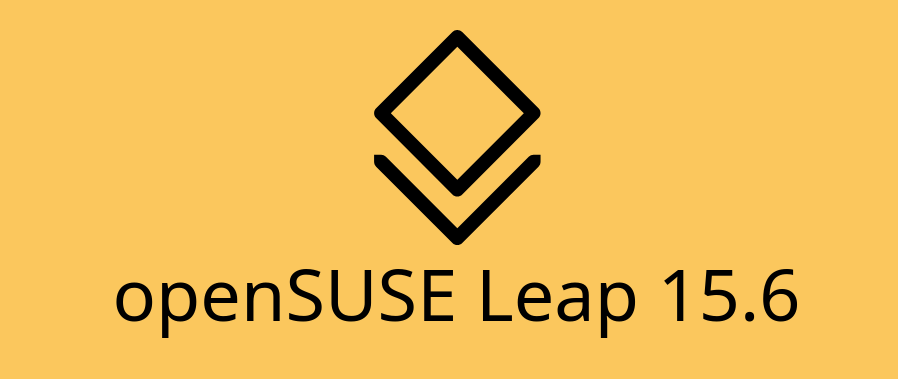Building Edge AI Infrastructure with KVM, openSUSE, and Ollama
26. Aug 2025 | Rudraksh Karpe | CC-BY-SA-3.0
Community Contribution

Edge AI infrastructure is transforming how we deploy machine learning workloads, bringing computation closer to data sources while maintaining privacy and reducing latency. This comprehensive guide demonstrates building an edge analytics platform using KVM virtualization, openSUSE Leap (15.6), K3s, and Ollama for local AI inference.
Our architecture leverages a KVM homelab infrastructure originally set-up by my Google Summer of Code Mentor. This set-up was built to create specialized AI nodes in a distributed cluster, with Longhorn providing shared storage for models and application data. Each component is chosen for reliability, scalability, and edge-specific requirements.
Prerequisites and Architecture Overview
This setup requires:
- KVM hypervisor with existing infrastructure
- Minimum 8GB RAM per VM (16GB recommended for larger models)
- Network storage for distributed file system
- Basic Kubernetes and networking knowledge
The final architecture includes multiple specialized nodes, distributed storage, monitoring, and load balancing for high-availability AI inference.
VM Foundation Setup
Creating the Edge AI Node
Start with a clean VM deployment using established automation tools:
cd ~geeko/bin/v-i
sudo ./viDeploy -c ./VM-K3s.cfg -n edge-ai-01
System Configuration
Complete the openSUSE installation with consistent settings across all nodes:
Installation Settings:
- Keyboard: US
- Timezone: UTC
- Root password:
gsoc(consistent across cluster)
Network Configuration:
# Configure static networking
cd /etc/sysconfig/network
cp ifcfg-eth1 ifcfg-eth0
vi ifcfg-eth0
Edit network configuration:
STARTMODE=auto
BOOTPROTO=static
IPADDR=172.xx.xxx.xx/24
Set hostname and disable firewall for edge deployment:
hostnamectl set-hostname edge-ai-01
echo "172.xx.xxx.xx edge-ai-01.local edge-ai-01" >> /etc/hosts
systemctl disable --now firewalld
systemctl restart network
Essential Package Installation
Install required components for Kubernetes and distributed storage:
zypper refresh
zypper install -y open-iscsi kernel-default e2fsprogs xfsprogs apparmor-parser
systemctl enable --now iscsid
Storage Configuration for Longhorn
Prepare dedicated storage for distributed AI workloads:
lsblk
fdisk /dev/vdb
# Create new GPT partition table and primary partition
mkfs.ext4 /dev/vdb1
mkdir -p /var/lib/longhorn
echo "/dev/vdb1 /var/lib/longhorn ext4 defaults 0 0" >> /etc/fstab
mount -a
systemctl reboot
Kubernetes Cluster Integration
Joining the Edge AI Cluster
Access your Rancher management interface to create a dedicated AI cluster:
- Navigate to Rancher WebUI:
http://172.16.200.15 - Create → Custom cluster
- Name:
edge-ai-cluster - Select K3s version
- Copy and execute registration command:
curl -fsSL https://get.k3s.io | K3S_URL=https://172.xx.xxx.xx:6443 K3S_TOKEN=your-token sh -
Verify cluster connectivity:
kubectl get nodes
kubectl get pods --all-namespaces
Ollama Installation and Configuration
Installing Ollama
Deploy Ollama for local LLM inference:
curl -fsSL https://ollama.com/install.sh | sh
systemctl enable --now ollama
Cluster Access Configuration
Configure Ollama for distributed access:
mkdir -p /etc/systemd/system/ollama.service.d
vi /etc/systemd/system/ollama.service.d/override.conf
Add cluster binding:
[Service]
Environment="OLLAMA_HOST=0.0.0.0:11434"
Apply configuration:
systemctl daemon-reload
systemctl restart ollama
Model Deployment Strategy
Deploy models based on hardware capabilities:
# For 8GB RAM nodes - quantized models
ollama pull phi3
# For 16GB+ RAM nodes - higher precision
ollama pull phi3
# Verify installation
ollama list
Quantized models (q4_K_M) reduce memory usage by ~75% while maintaining performance for edge analytics.
Edge Analytics Platform Deployment
Repository Setup
Clone the Edge Analytics ecosystem:
git clone https://github.com/rudrakshkarpe/Edge-analytics-ecosystem-workloads-openSUSE.git
cd Edge-analytics-ecosystem-workloads-openSUSE
Configuration for Cluster Deployment
Update Kubernetes manifests for distributed deployment:
vi k8s-deployment/streamlit-app-deployment.yaml
Modify Ollama endpoint:
- name: OLLAMA_BASE_URL
value: "http://172.xx.xxx.xx:11434"
Application Deployment
Deploy in correct order for dependency resolution:
kubectl apply -f k8s-deployment/namespace.yaml
kubectl apply -f k8s-deployment/storage.yaml
kubectl apply -f k8s-deployment/streamlit-app-deployment.yaml
kubectl apply -f k8s-deployment/ingress.yaml
Verify deployment status:
kubectl get pods -n edge-analytics
kubectl logs -f deployment/edge-analytics-app -n edge-analytics
Distributed Storage with Longhorn
Longhorn Deployment
Deploy distributed storage system:
kubectl apply -f https://raw.githubusercontent.com/longhorn/longhorn/master/deploy/longhorn.yaml
Wait for all pods to be running:
kubectl get pods -n longhorn-system -w
Configure Default Storage Class
Set Longhorn as default for persistent volumes:
kubectl patch storageclass longhorn -p '{"metadata": {"annotations":{"storageclass.kubernetes.io/is-default-class":"true"}}}'
Multi-Node Scaling and Specialization
Additional Node Deployment
Scale the cluster with specialized nodes:
Node IP Assignment:
- edge-ai-02:
172.16.220.11 - edge-ai-03:
172.16.220.12
Node Labeling for Workload Distribution
Label nodes based on capabilities:
# GPU-enabled nodes
kubectl label node edge-ai-02 node-type=gpu-inference
# CPU-optimized nodes
kubectl label node edge-ai-03 node-type=cpu-inference
Specialized Model Deployment
Deploy appropriate models per node type:
# GPU nodes - larger models
ssh root@172.16.220.11
ollama pull phi3
# CPU nodes - optimized quantized models
ssh root@172.16.220.12
ollama pull phi3
Production Monitoring and Operations
Monitoring Stack Deployment
Deploy comprehensive observability:
kubectl apply -f k8s-deployment/monitoring.yaml
Service Access
For development and testing access:
# Edge Analytics application
kubectl port-forward svc/edge-analytics-service 8501:8501 -n edge-analytics
# Prometheus metrics
kubectl port-forward svc/prometheus 9090:9090 -n monitoring
# Grafana dashboards
kubectl port-forward svc/grafana 3000:3000 -n monitoring
Operational Commands
Model Management:
# Check model status across cluster
kubectl exec -it daemonset/ollama -n edge-analytics -- ollama list
# Update models cluster-wide
kubectl exec -it daemonset/ollama -n edge-analytics -- ollama pull llama3:latest
Scaling Operations:
# Horizontal scaling
kubectl scale deployment edge-analytics-app --replicas=3 -n edge-analytics
# Resource monitoring
kubectl top nodes
kubectl top pods -n edge-analytics
Access Points and Integration
Service URLs:
- Edge Analytics UI:
http://172.xx.xxx.xx:8501 - Rancher Management:
http://172.16.200.15 - Prometheus Metrics:
http://172.xx.xxx.xx:9090 - Grafana Dashboards:
http://172.xx.xxx.xx:3000(admin/admin)
Key Advantages of This Architecture
- Privacy-First: All AI inference happens locally, ensuring data never leaves your infrastructure
- Scalable: Kubernetes orchestration enables easy horizontal scaling as workloads grow
- Resilient: Distributed storage and multi-node deployment provide high availability
- Cost-Effective: Utilizes existing hardware infrastructure without cloud dependencies
- Flexible: Support for various model sizes and quantization levels based on hardware
Troubleshooting Common Issues
VM Connectivity:
virsh list --all
virsh console edge-ai-01
Kubernetes Issues:
kubectl describe node edge-ai-01
kubectl get events --sort-by=.metadata.creationTimestamp
Ollama Service Problems:
systemctl status ollama
journalctl -u ollama -f
curl http://172.xx.xxx.xx:11434/api/tags
This edge AI infrastructure provides a robust foundation for deploying local LLMs with enterprise-grade reliability, enabling organizations to leverage AI capabilities while maintaining complete control over their data and compute resources.
For advanced configurations and additional features, explore the complete repository documentation and consider integrating with external tools like vector databases for enhanced RAG capabilities.
Huge shoutout to my mentors Bryan Gartner, Terry Smith, Ann Davis for making this set-up possible.